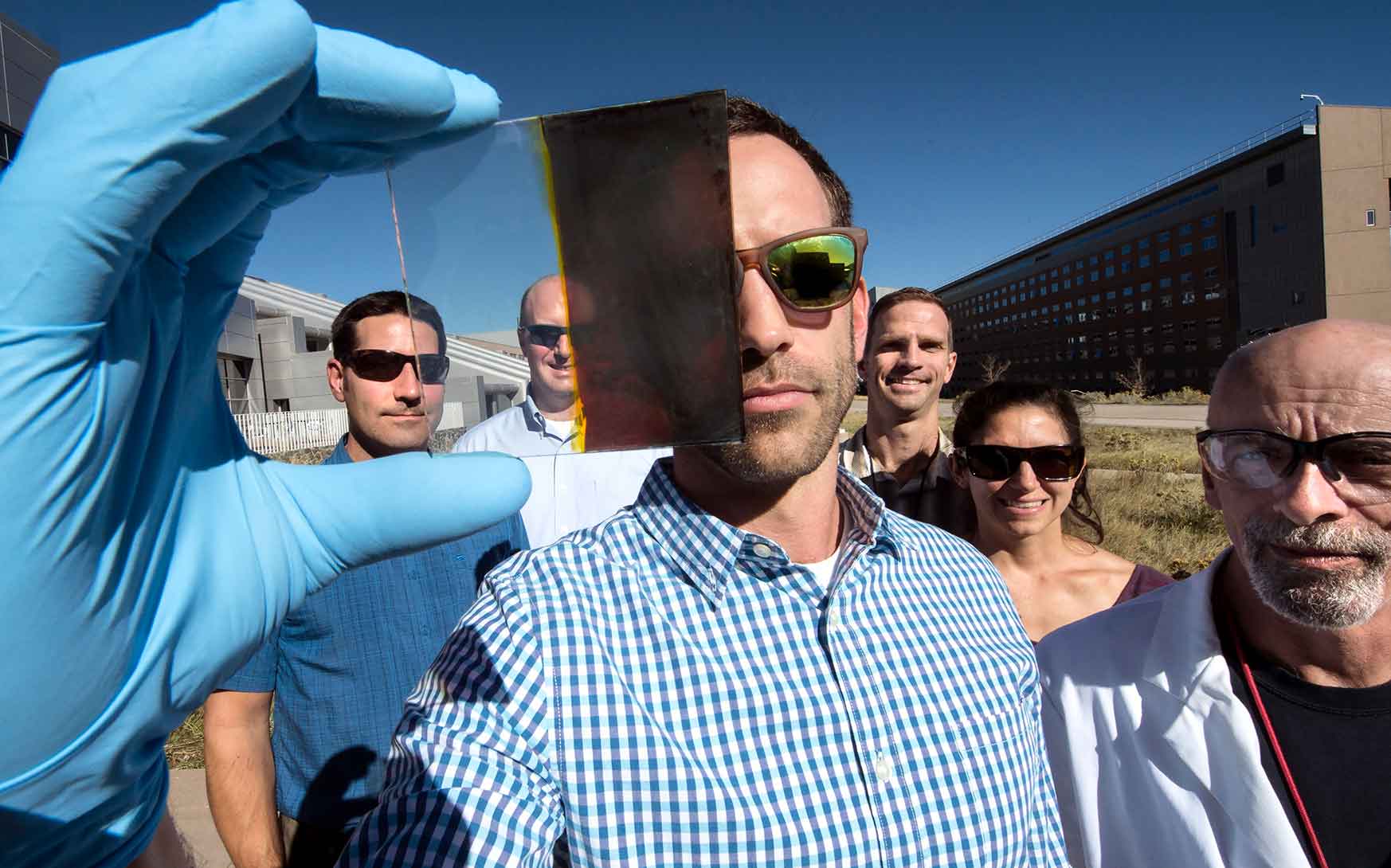By Jean-Jacques DeLisle, contributing writer
With so much focus on green energy in the science community, copious amounts of labor have been designated to the advancement of solar energy in particular. In respect to the solar glass that actually absorbs the sunlight necessary to generate energy, it has been an obstacle to create windows that are not only aesthetically pleasing but fully functional as well. Solar panels have come a long way in recent years, already progressing from bulky panels to tinted glass, but the Department of Energy’s National Renewable Energy Laboratory has taken the next step. On November 27, 2017, the National Renewable Energy Laboratory released its invention of solar windows that darken as they heat up and produce electricity.
The ability for this specialized solar glass to change its appearance when exposed to sunlight is caused by the dispersion of specific molecules when the glass heats up. The molecule methylamine, which is stored in the switchable layer of the solar glass panel, is forced out when the transparent window increases in temperature. This heating-up process subsequently causes the glass to undergo its color-change process, darkening and generating electricity simultaneously. This darkened state of the light-responsive glass is then able to restrict the visible light passing through it by 97%, a huge increase from the 33% blockage that it achieves in its transparent mode. It’s basically auto-dimming sunshades for buildings and automobiles.
When this window device is denied access to sunlight or other heating elements, it begins to cool. After the glass begins cooling, the methylamine molecules are reabsorbed into the material, thus causing the window to return to its transparent state. The process was only made possible because of its incorporation of highly advanced perovskite materials and single-walled carbon nanotubes.

Lance Wheeler (front) developed a switchable photovoltaic window along with (from left) Nathan Neale, Robert Tenent, Jeffrey Blackburn, Elisa Miller, and David Moore. Image source: NREL.
Even in its darkened state, this chameleon-like glass can still establish a solar power conversion efficiency of 11.3%, a first of its kind. “There are thermochromic technologies out there, but nothing that actually converts that energy into electricity,” said Lance Wheeler, a scientist at NREL. The invention has the added bonuses of being efficient and cool, with the only foreseeable downside being the few times you experience when you may not want the tint-changing glass to darken and have no control over its transformation. Unfortunately, the process is not quite complete. It currently can average only 20 light-dark conversion cycles before its performance declines. NREL still has time to add some last-minute tech, though, and the technology has enough promise that the development will continue.
“There is a fundamental tradeoff between a good window and a good solar cell,” said Wheeler. “This technology bypasses that. We have good solar cells when there’s lots of sunshine and we have a good window when there’s not.” With this invention, Wheeler and his team were able to combine practicality and popular visual perceptions. Smart solar glass — with just a few more advancements — will be a nice addition to the ongoing tech war.
Advertisement
Learn more about Electronic Products Magazine





